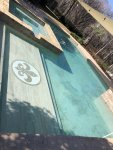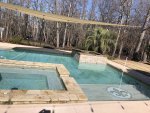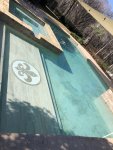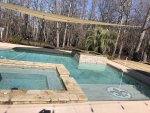I like to leave my pool open all year because if we can't swim we it is beautiful to look at... Instead of COVID having me at home work and life has had me neglecting my pool chemistry.
Since the SWG doesn't run due to cold I've added chlorine Pucks. The pucks should raise FC and CYA a bit.
FC 0.8
PH 7.4
TA 40
CH 320
CYA 30-40 hate the dot test lol...
SALT 3300
TEMP 47
CSI -1.06
I'm not exactly sure what is affecting CSI. In what order and what levels should I adjust first??
thanks
Since the SWG doesn't run due to cold I've added chlorine Pucks. The pucks should raise FC and CYA a bit.
FC 0.8
PH 7.4
TA 40
CH 320
CYA 30-40 hate the dot test lol...
SALT 3300
TEMP 47
CSI -1.06
I'm not exactly sure what is affecting CSI. In what order and what levels should I adjust first??
thanks





